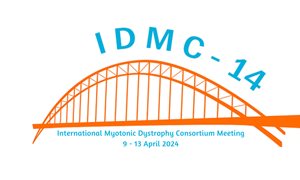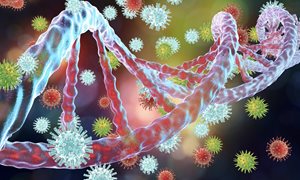
A study conducted at Radboud university medical center shows that combined surgery and physiotherapy, both during and after the procedure, yields good results for congenital muscular torticollis in children. This condition causes head and neck tilt due to a shortened neck muscle. This therapy reduces facial asymmetry, decreases pain, and improves children's movement without limitations.
Congenital muscular torticollis (CMT) is a deformity that develops during the neonatal period, caused by unilateral idiopathic fibrosis of the sternocleidomastoid muscle. This results in asymmetry in the face, shoulders, and spine. Children with CMT sometimes suffer pain and are limited in their range of motion. Marloes Nienhuijs, a maxillofacial and facial surgeon, treats these children at Radboudumc Amalia Children's Hospital. ‘The condition can be very limiting for children. Some may, for example, be unable to participate in physical education. They also suffer aesthetically.’
CMT results from the shortening of a neck muscle that occurs during pregnancy. Usually, a swelling in the neck is noticed in the first weeks after birth, which frequently disappears after a few months. Fibrous strands may develop in the muscle, which do not grow normally, leading to progressive shortening. For most children, pediatric physiotherapy is effective, but in 10 to 15 percent, surgery is needed.
Surgery of the neck muscle includes cutting the fibrous strands. Radboudumc is the only center in the Netherlands where a specialized pediatric physiotherapist (PT) is closely involved before, during, and after this operation. During the procedure, the PT assess what needs to be done. Leo van Vlimmeren explains, ‘While the patient is under anesthesia, I check if the neck has enough mobility in all directions. If not, we look together for more hidden shortenings. We continue until the range of motion is completely normally.’ Only then is the surgery completed, and will be followed by specialized pediatric physiotherapy. This intensive collaboration, established since 2014, leads to good results.
Analysis of 3D facial photos
Surgeon Marloes Nienhuijs and pediatric physiotherapist Leo van Vlimmeren assessed the results of this combined treatment, written down by Dirk-Melle Beek. They examined 3D photos of 43 children taken two months before and two years after the operation. Two years after the surgery, even during adolescence, these patients showed less facial asymmetry. Nienhuijs says, ‘I can tell a patient that their face looks less skewed, but with this method, we can objectively confirm it.’
Early diagnosis is crucial
Nienhuijs also observed in this research that the earlier CMT is treated, the fewer complaints and asymmetry a child experiences from the shortened neck muscle. ‘Early diagnosis is crucial; we prefer to see children as soon as possible at Radboudumc Amalia Children's Hospital. The ideal age for surgery is around 1 year, but we also see good results at later ages.’
Nienhuijs and Van Vlimmeren see children from all over the country in their weekly clinic. Some are very young, while others come when they are older. Nienhuijs explains, ‘Sometimes they have already had multiple surgeries, but there has been no follow-up by a physiotherapist. Some children have worn a full brace, which is a very unpleasant treatment for children and usually not effective.’
Van Vlimmeren adds, ‘We want to raise more awareness about the condition and our treatment approach, now that we see these results. How a child with a skewed head is treated depends on whether the pediatric physiotherapist recognizes what is happening and refers them.’ Therefore, he provides education throughout the country to pediatric physiotherapists to alert them to the symptoms and treatment after surgery. The researchers hope to be able to follow up with the patients for a longer period in future studies.
About this publication
This article appeared in International Journal of Oral and Maxillofacial Surgery: The effect of combined surgery and physiotherapy on the facial asymmetry in patients with congenital muscular torticollis: a retrospective cohort study – D-M Beek, L van Vlimmeren, R Bruggink, M Pelsma, T Xi, M Nienhuijs. DOI: 10.1016/j.ijom.2024.04.009.
-
Want to know more about these subjects? Click on the buttons below for more news.
More information
Pauline Dekhuijzen

wetenschaps- en persvoorlichter
Related news items

14th International Myotonic Dystrophy Consortium Meeting Brings Hope for Treatment International leaders share new insights in Nijmegen; Family Day
4 April 2024New developments, treatments, and research will be discussed at the 14th International Myotonic Dystrophy Consortium Meeting (IDMC-14) at De Vereeniging in Nijmegen. This 5-day meeting (9-13 April) concludes on April 13th with a Family Day for patients with myotonic dystrophy and their loved ones.
go to page
Nijmegen researchers find new genetic cause bubble boy disease SCID Genetic new born screening SCID can be further refined
19 March 2024Researchers from Nijmegen and Newcastle discovered a new genetic mutation leading to severe combined immune deficiency disorder (SCID). It’s the first time a mutation in the proteasome, a molecular shredder, has been linked to this serious disease.
go to page


